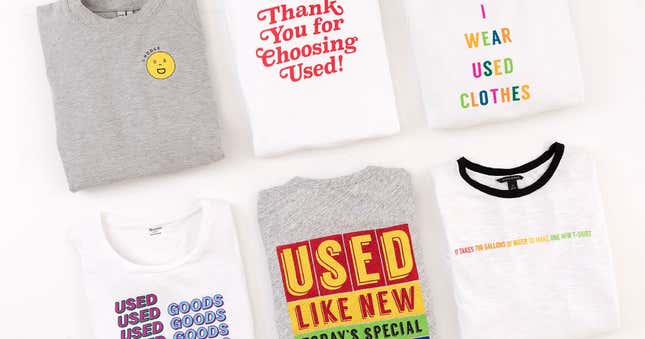
Thrifters know: Not all used clothes are cute. Finding those hidden treasures among the racks of clothes at their local consignment shop can be tiring. Now, actress Olivia Wilde is trying to make our lives a bit easier by finding the cute used clothes for us and adding a little extra to them as part of her new collaboration with thredUP, an online thrift store.
Her sustainability campaign company, Conscious Commerce, which has worked with the likes of H&M and Anthropologie, launched this new collection, called “Choose Used,” on Tuesday. The actress is attempting to profit off the growing interest in the secondhand clothing market—and at the same time reduce the amount of garbage making its way to landfills.
“Our ‘Choose Used’ collaboration is all about celebrating and de-stigmatizing used clothing to cut the waste and create a more sustainable fashion future,” said Wilde in a press release.
Most fashionistas rarely think about how their shopping addiction is fueling Earth’s ecological downfall, but the impact is real. A single cotton T-shirt requires, on average, 700 gallons of water to produce. And a pair of jeans takes more than twice that amount, according to the 2018 State of Reuse Report. And then there’s the energy these clothes take to produce—to run those sewing machines or keep the lights on in the sweatshops where people toil tirelessly. Or how about the petrochemicals required to produce synthetic fibers like polyester?
Estimates say that more than half of so-called “fast fashion”—think cheap stores like Forever 21—winds up in the trash in less than a year, per a 2017 report that examined the textile industry’s impact. Overall we humans send some $500 billion worth of clothes to dumps every year, some of which have barely been worn or might even be new. My shopaholic roommates who clean out their closets some four times a year can attest to this.

This throwaway culture means the industry produces even more clothes, which means more carbon emissions. By 2050, the fashion industry’s carbon emissions could balloon to a quarter of the global emissions we’ll be allowed in that year to meet international climate goals.
All of this helps explains why, from an environmental perspective, buying secondhand is way better than buying new.
“It’s actually one of the biggest things you can do to reduce the impact of your consumption of clothes,” said Gregory Peters, a professor of environmental systems analysis at Chalmers University of Technology who’s researched the topic, in an email to Earther.

The trend of buying used may be catching on: The market is expected to double within five years to be worth some $51 billion, according to thredUP’s 2018 Resale Report. But there’s still a lot of room for it to expand. While more and more women seem willing to buy used clothes, research shows that nearly half of people rarely or never do.
Wilde and thredUP may have an opportunity to create broader interest by putting a major name behind used clothes. And, in the case of the “Choose Used” line, adorning them with new, retro-styled logos.
“It’s great to see these high-impact people and personalities addressing issues like this,” Deborah Drew, an associate at the World Resource Institute’s Business Center, told Earther. “I think that can go a long way.”
The clothes aren’t exactly bargain basement thrift store prices—some items are as low as $20, but others may be closer to $100. And, buying used, especially online, isn’t without cost. All items are shipped via trucks, and that transport contributes to their greenhouse gas emissions.
Then again, buying stuff in-store can be pretty bad, too, with your drive to and from the store increasing a product’s carbon footprint.
“Nothing is without any sort of impact,” Drew told Earther. “Buying anything should be thoughtful.”